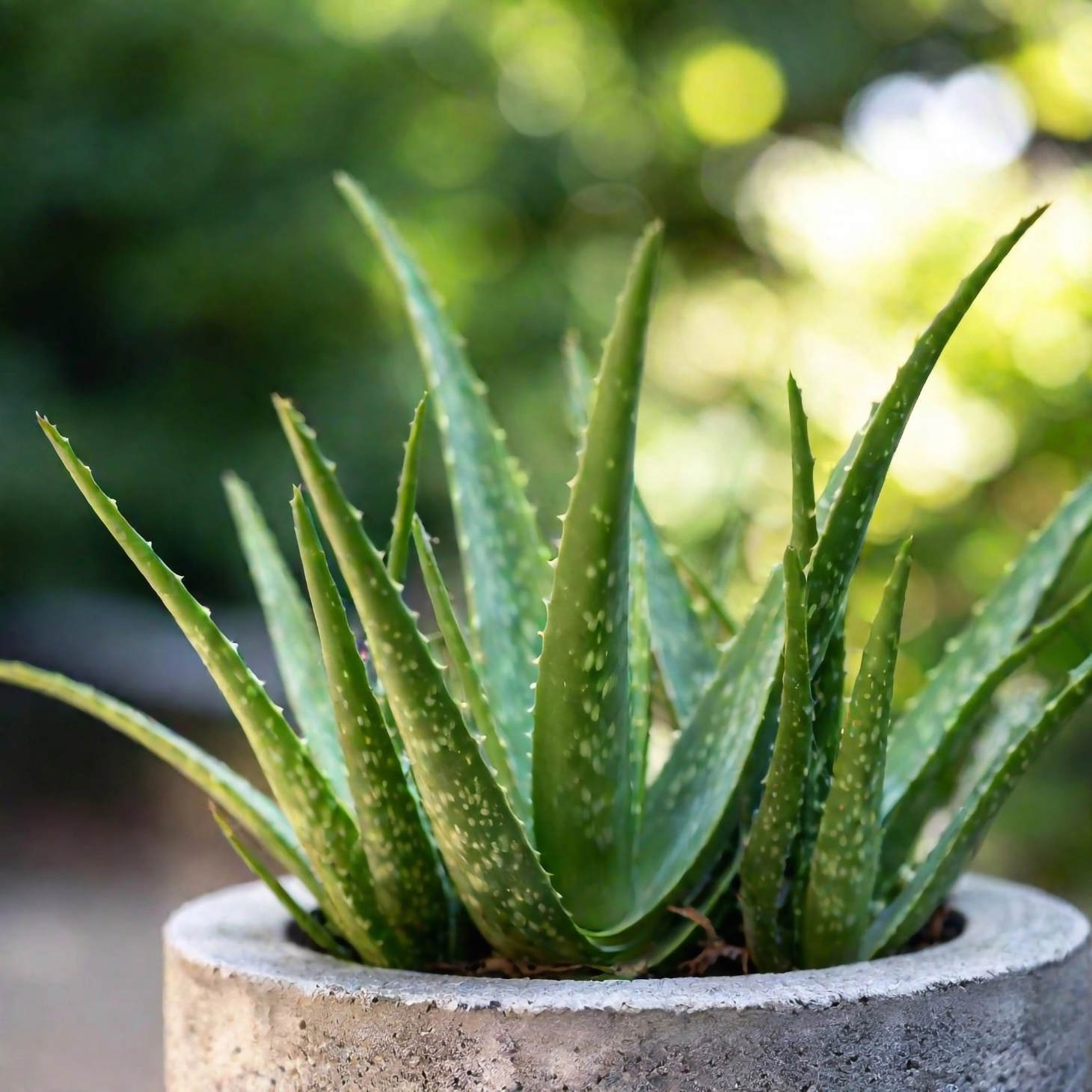Parts of an Aloe Plant
Aloe plants are cool succulents that can do more than just look pretty in your garden. These tough little plants have thick, fleshy leaves that store water, helping them survive in dry places. Aloe vera, the most famous type, has leaves packed with a gel that’s great for soothing burns and skin irritations.
The main parts of an aloe plant are easy to spot. You’ve got the roots that suck up water and nutrients from the soil. Then there’s the stem, which is usually pretty short in aloes. The star of the show is the leaves – those pointy, green spears that fan out from the center. Some aloes even grow flowers on tall stalks, adding a pop of color to their already eye-catching look.
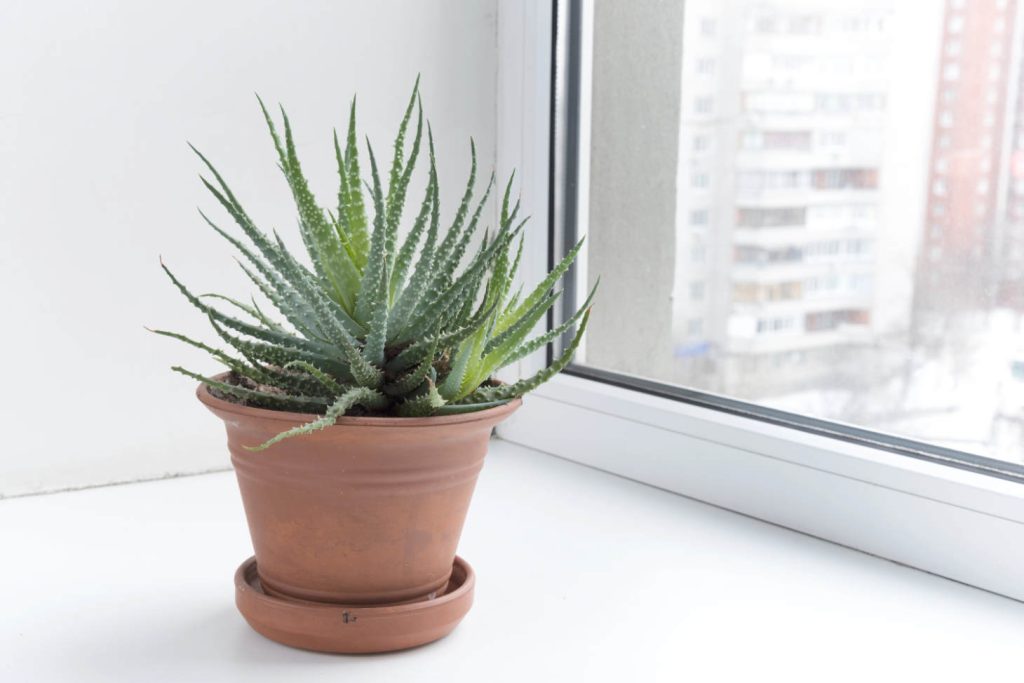
Aloes are super easy to care for, making them perfect for beginner plant parents. They don’t need much water and can handle a bit of neglect. Plus, you can easily grow new aloes from the little “pups” that sprout up around the base of the mother plant.
Key Takeaways
- Aloe plants have thick leaves that store water and gel
- The main parts are roots, stem, leaves, and sometimes flowers
- Aloes are low-maintenance and easy to propagate
Understanding Aloe Plants
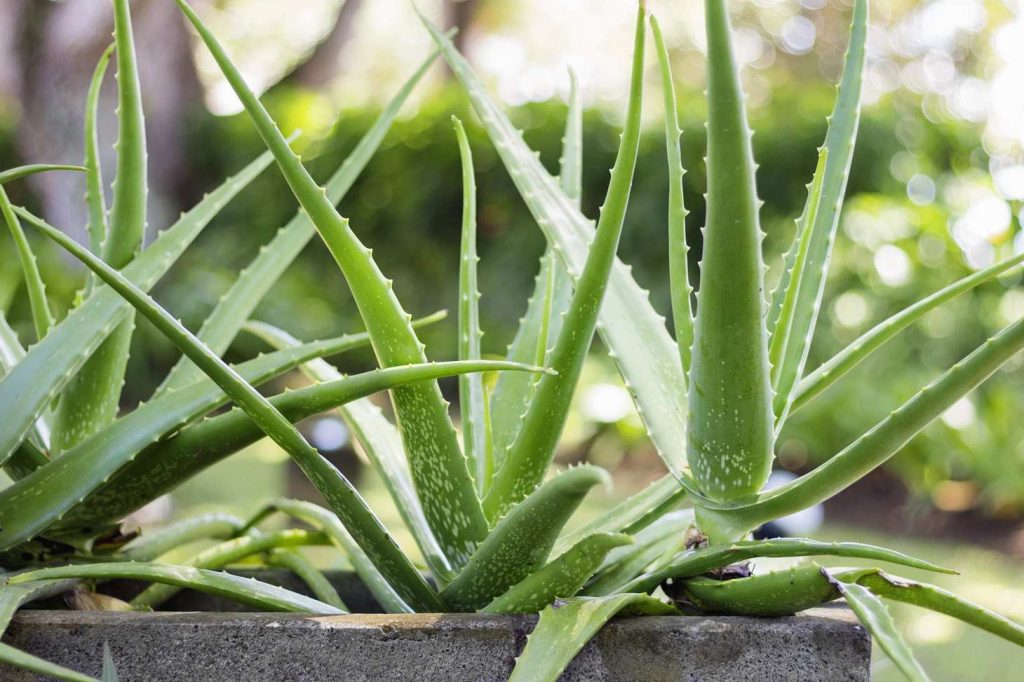
Aloe plants are fascinating succulents known for their unique appearance and healing properties. You’ll find many types of aloe with different uses and care needs.
Botanical Profile
Aloe plants have thick, fleshy leaves arranged in rosettes. Their leaves store water, helping them survive in dry climates. Most aloe species have green leaves, but some show reddish hues when stressed. The leaves often have serrated edges and may have white spots.
Aloe flowers grow on tall stalks called inflorescences. These can reach up to 3 feet tall in some species. The flowers are usually yellow, orange, or red. They attract pollinators like bees and birds.
The roots of aloe plants are shallow and spread out near the soil surface. This helps them quickly absorb water when it rains.
Cultural Significance
Aloe vera is the most famous aloe species. People have used it for thousands of years in medicine and skincare. Ancient Egyptians called it the “plant of immortality” and used it in their burial rituals.
In many cultures, aloe is seen as a symbol of healing and protection. Some people hang aloe plants by their front doors to ward off bad luck and negative energy.
Today, aloe vera is a common ingredient in lotions, drinks, and health supplements. You can find it in many household products.
Environmental Preferences
Aloe plants thrive in warm, dry environments. They do best in areas that mimic their native desert habitats. Most aloe species prefer:
- Bright, indirect light
- Well-draining soil
- Temperatures between 55°F and 80°F
- Low humidity
You can grow aloe plants outdoors in USDA zones 8-11. In colder areas, it’s best to keep them as indoor plants. They make great houseplants because they’re low-maintenance and can tolerate some neglect.
Varieties of Aloe
There are over 500 species of aloe plants. Here are some popular varieties:
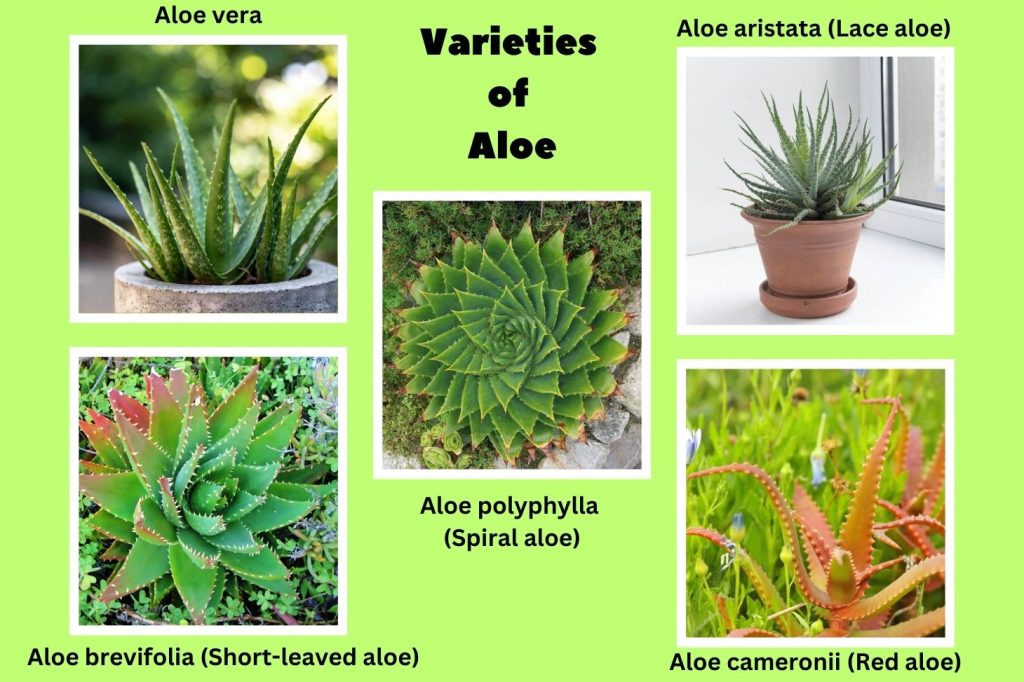
- Aloe vera: The most well-known for its medicinal uses
- Aloe aristata (Lace aloe): Has white spots and soft spines
- Aloe polyphylla (Spiral aloe): Forms a unique spiral pattern
- Aloe brevifolia (Short-leaved aloe): Makes a great ground cover
- Aloe cameronii (Red aloe): Turns bright red in full sun
Some aloes are hybrids created by crossing different species. These often combine the best traits of their parent plants.
Anatomy of an Aloe Plant
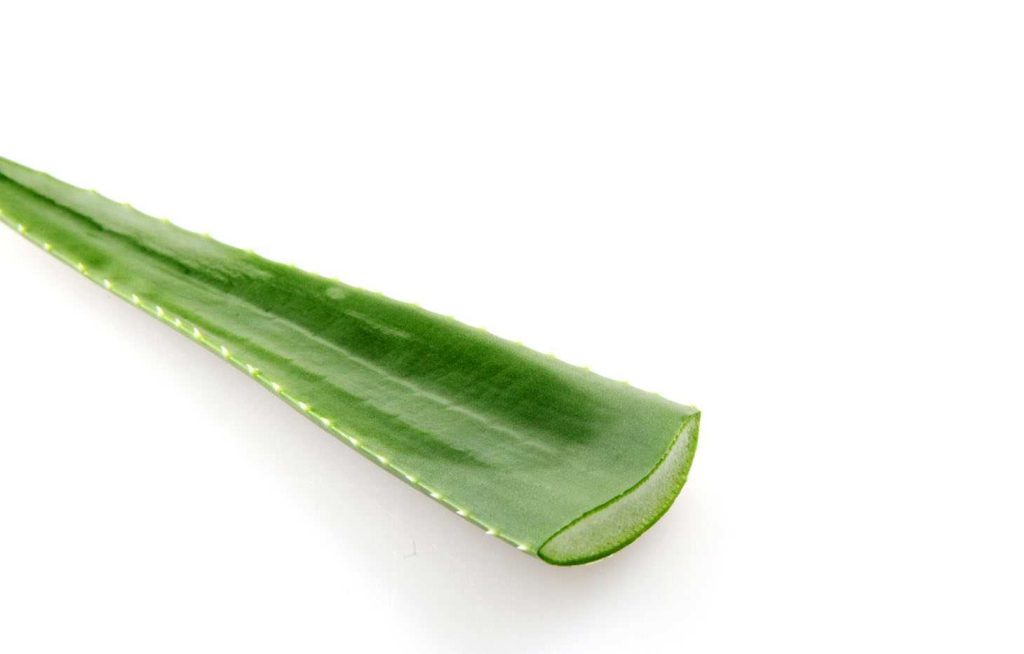
Aloe plants have unique structures that help them thrive in dry climates. They store water in their leaves and use special features to survive harsh conditions.
Leaves and Gel
The fleshy leaves are the most recognizable part of an aloe plant. They grow in a rosette shape and can be quite thick. Each leaf has a tough outer layer that protects the plant from water loss.
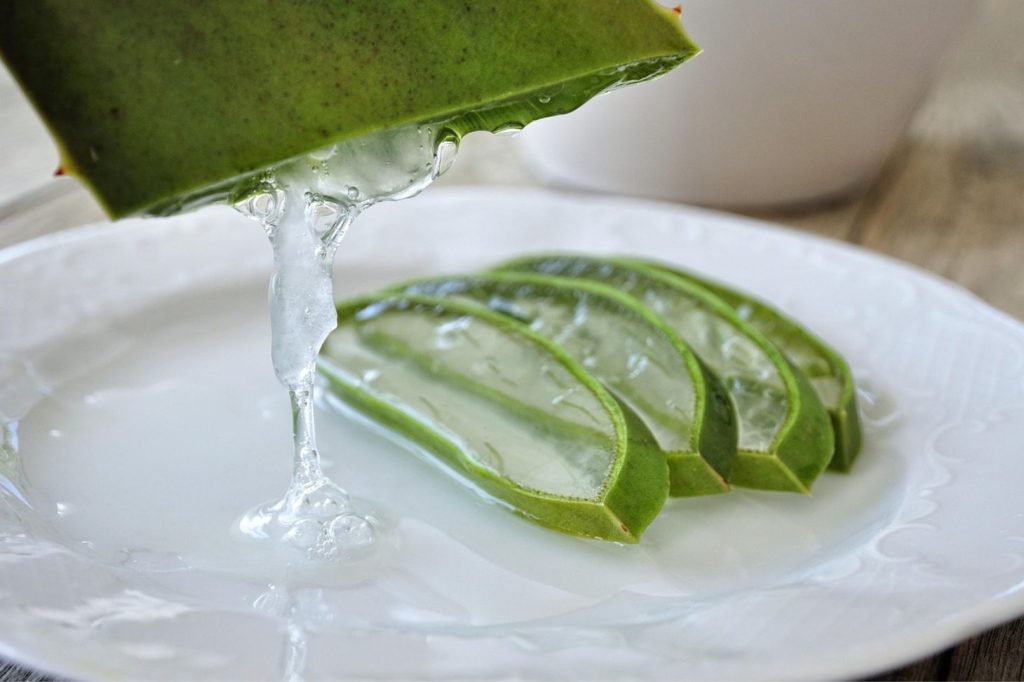
Inside the leaves, you’ll find a clear gel. This gel is what aloe is famous for. It’s full of nutrients and has healing properties. The gel helps the plant store water for long periods of time.
Aloe leaves often have small spines or serrated edges. These thorns protect the plant from animals that might want to eat it.
Stem and Roots
Aloe plants have a short stem that’s usually hidden by the leaves. As the plant grows, the stem can become visible and even branch out.
The root system of an aloe is shallow but spreads out. This helps the plant quickly absorb water when it rains. The roots are good at finding water in dry soil.
Aloe roots are also great at anchoring the plant. This keeps it stable in windy conditions.
Flowers and Reproduction
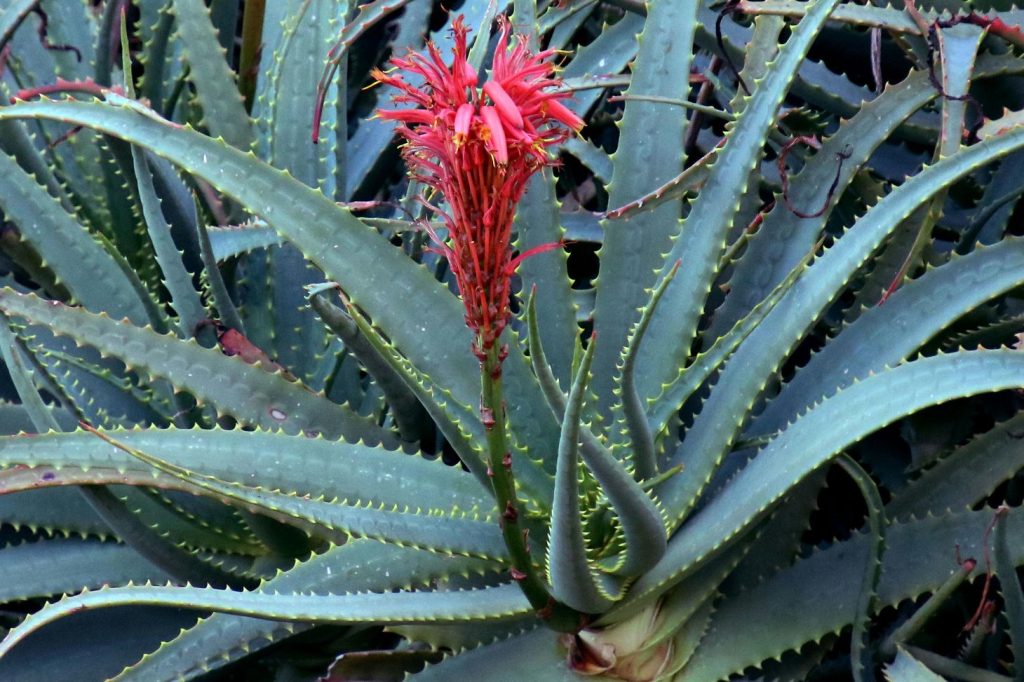
Many aloe plants produce flowers on tall stalks. These stalks can grow much taller than the leaves. The flowers are often bright orange or red.
Aloe flowers attract birds and insects. These visitors help spread pollen, which is how aloe plants reproduce.
Some aloe plants also make “pups.” These are small plants that grow from the base of the main plant. You can remove these pups to start new aloe plants.
Aloe flowers don’t just look pretty. They also help the plant make seeds for reproduction.
Caring for Your Aloe
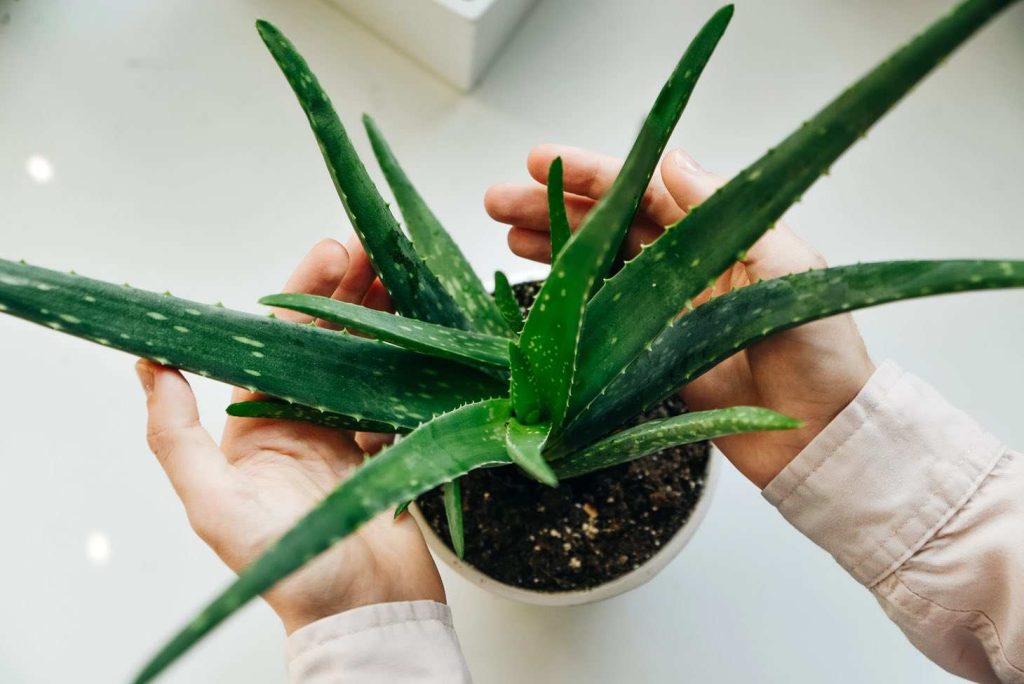
Aloe plants are easy to care for when you know the basics. They need the right soil, water, and light to thrive. With proper care, you can avoid common problems and keep your aloe healthy.
Optimal Soil and Potting
Your aloe needs well-draining soil to stay happy. Mix regular potting soil with coarse sand or perlite to create the perfect blend. This helps prevent water from sitting around the roots.
Making your own aloe vera soil can be messy and wasteful. You’ll probably buy more coarse sand and perlite than you need, and it’s hard to know if you have the right mix.
Our succulent soil is the easy answer. It’s already got the perfect blend for healthy aloe vera, so you can skip the guesswork and get right to enjoying your thriving plant! Ready to give it a try?
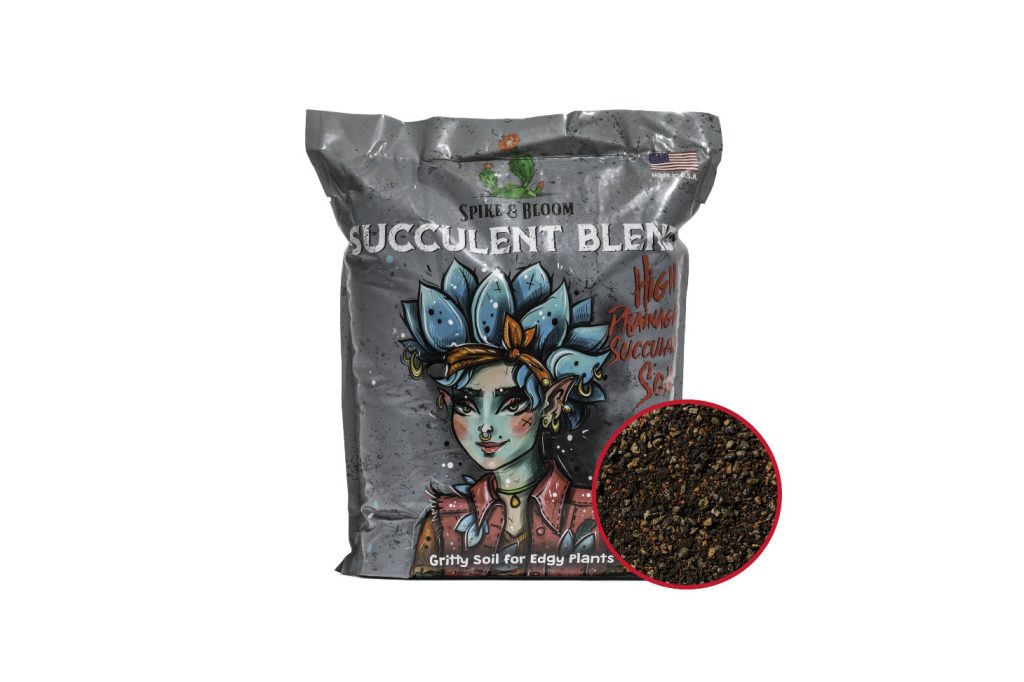
Choose a pot with drainage holes. Clay pots work great because they let excess water evaporate. Make sure the pot is only slightly bigger than the plant’s root ball.
Repot your aloe every 2-3 years. This gives it fresh soil and room to grow. When repotting, gently remove the plant and shake off old soil. Place it in the new pot and fill with your soil mix.
Watering and Light Requirements
Aloes don’t need much water. Let the soil dry out between waterings. In summer, water every 2-3 weeks. In winter, water even less.
When you do water, soak the soil until water runs out the bottom. Don’t let your aloe sit in water, as this can cause root rot.
These plants love bright light. Put your aloe near a sunny window. A western or southern facing spot is perfect. If leaves turn brown, it might be getting sunburned. Move it to a slightly shadier spot.
Dealing With Pests and Problems
Overwatering is the biggest threat to aloes. If leaves get soft and mushy, you’re watering too much. Let the soil dry out completely before watering again.
Watch for pests like mealybugs or scale insects. If you spot them, wipe the leaves with rubbing alcohol on a cotton swab.
Some varieties of aloes can handle cold temperatures down to 20°F to 25°F (-6°C to -4°C). They’re good in hardiness zones 8-11. If you live somewhere colder, bring your aloe inside when temps drop below 50°F (10°C).
If your aloe’s leaves turn yellow, it might need more light. Brown spots could mean too much direct sun. Adjust its spot until you find the sweet spot.
Aloe’s Health Benefits
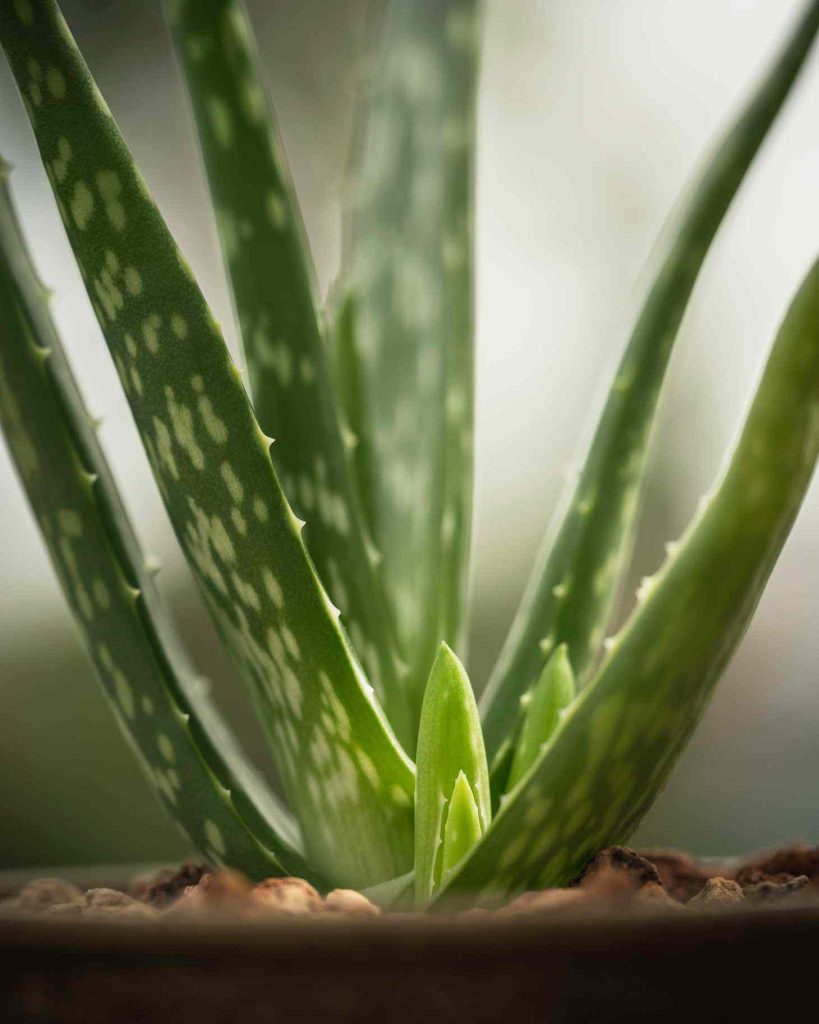
Aloe vera offers many benefits for your health, both inside and out. This versatile plant contains helpful compounds that can soothe your skin and support your body.
Skin Care and External Use
Aloe gel works wonders for your skin. You can apply it to minor burns, cuts, and scrapes to help them heal faster. The gel forms a protective layer that keeps the area moist and clean. It also has anti-inflammatory properties that can reduce redness and swelling.
For everyday use, aloe makes a great natural moisturizer. It hydrates your skin without feeling greasy. You might find it helpful for dry, itchy, or irritated skin conditions too. Some people use aloe to soothe sunburns or razor burn.
Aloe gel contains vitamins and minerals that nourish your skin. It’s packed with antioxidants that fight damage from free radicals. This may help slow signs of aging like fine lines and wrinkles.
Internal Use and Precautions
You can drink aloe juice or take supplements for potential internal benefits. Some claim it helps with digestion and may have a mild laxative effect. The plant contains compounds that might boost your immune system and reduce inflammation in your body.
But be careful – the yellow sap (aloin) found just under the skin can be toxic if consumed in large amounts. Stick to products made for drinking that have had the aloin removed.
Always talk to your doctor before taking aloe internally. It can interact with some medications. Pregnant women and people with certain health conditions should avoid ingesting aloe.
Start with small amounts to see how your body reacts. Stop using it if you notice any side effects like stomach cramps or diarrhea.
Propagation and Cultivation
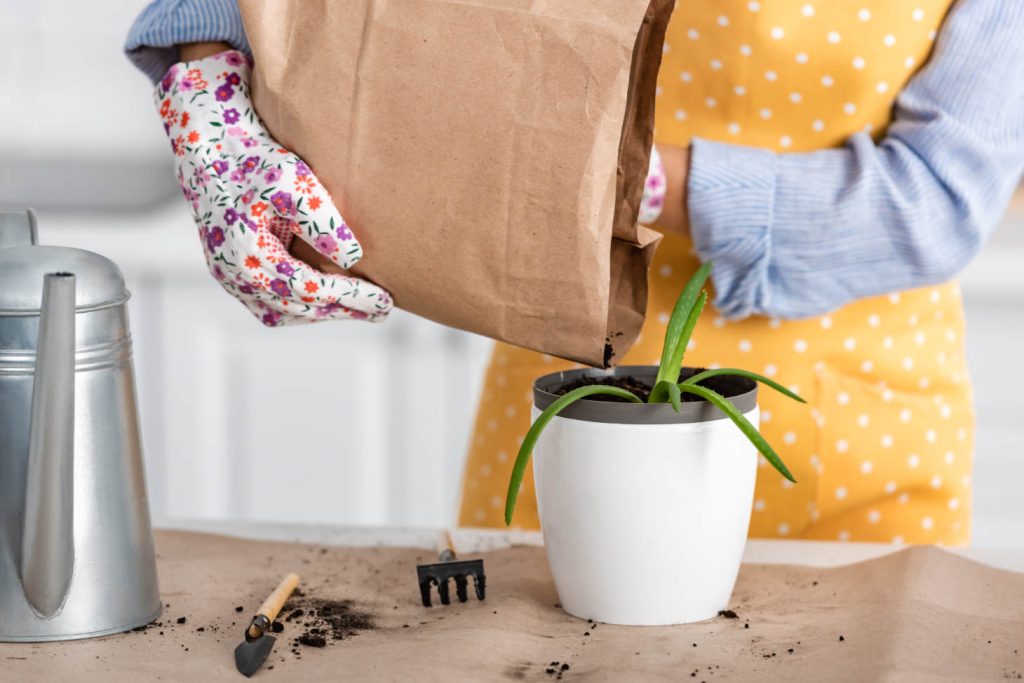
Aloe plants are easy to grow and multiply. You can make new plants from offshoots or seeds. These succulents thrive in dry conditions and are relatively low-maintenance.
Growing Aloe Offspring
You can grow new aloe plants from pups. These are baby plants that grow around the base of the mother plant. Wait until the pups are about 3-4 inches tall. Then, gently remove them with their roots intact.
Let the pups dry for a day or two. This helps prevent rot. Plant them in a pot with well-draining soil. Water sparingly until roots form.
You can also grow aloe from seeds. Collect seeds from a mature plant’s flowers. Sow them in sandy soil and keep them warm and moist. Seedlings will appear in 2-4 weeks.
Cultivation Techniques
Aloe plants thrive in bright, indirect sunlight. Place them near a window that gets plenty of light, but avoid direct, intense sun for prolonged periods, as this can scorch the leaves. They do well in arid environments and don’t need much water.
Use a pot with drainage holes. Mix regular potting soil with coarse sand or perlite for good drainage. Water your aloe only when the soil is completely dry.
In warm climates, you can grow aloe outdoors. They make great additions to rock gardens. Be careful, though. In some areas, aloe can become invasive.
Aloe doesn’t need much fertilizer. Feed it once a year in spring with a balanced, water-soluble plant food.
Frequently Asked Questions
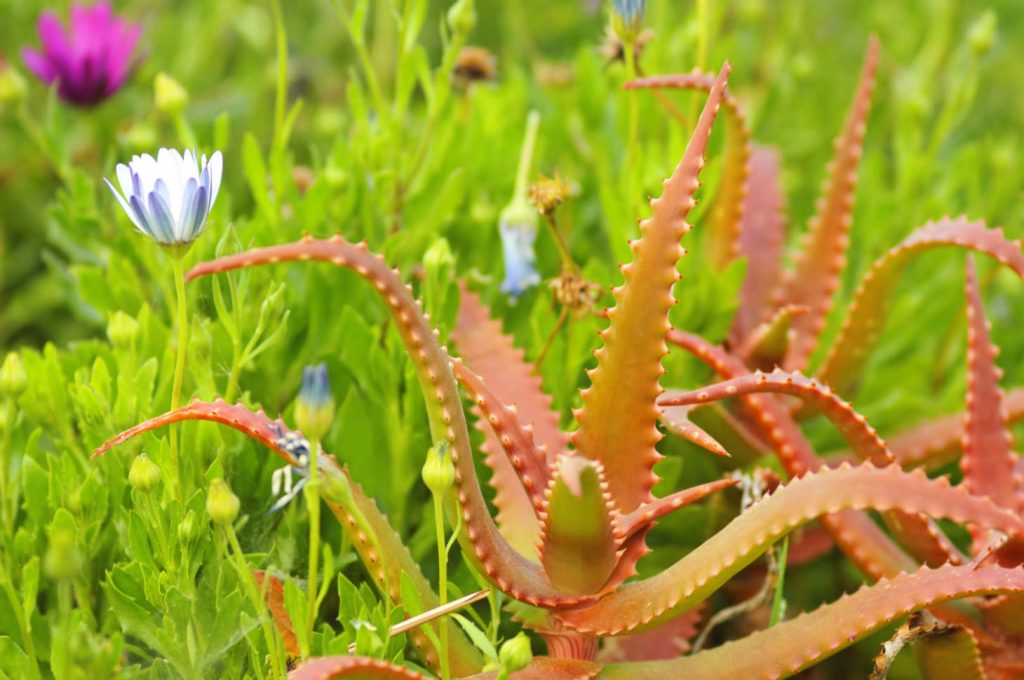
Aloe vera plants are easy to care for and have many helpful uses. Here are some common questions about aloe plants and how to keep them healthy.
What are the different parts of an aloe plant and what do they do?
Aloe plants have thick, fleshy leaves filled with gel. The outer green part protects the plant. Inside, the clear gel helps heal cuts and burns. The roots absorb water and nutrients from soil.
What are some of the benefits of having an aloe vera plant at home?
Aloe gel can soothe minor burns and skin irritation. It’s handy to have for small kitchen accidents. The plant also purifies indoor air. Growing aloe is fun and adds greenery to your home.
How do you properly care for an indoor aloe vera plant?
Plant aloe in well-draining soil. Put it in bright light but not direct sun. Water deeply but let the soil dry out between waterings. In winter, water less often. Use a pot with drainage holes.
What can cause problems with aloe vera plant care and how can you address them?
Overwatering is a common issue. It can lead to root rot. Let the soil dry out more between waterings. Too little light causes weak growth. Move the plant to a brighter spot. Pests like mealybugs can be removed with rubbing alcohol.
How can you tell if your aloe plant is healthy?
A healthy aloe has plump, upright leaves. The color should be bright green, not pale or brown. New leaves should grow from the center. The plant shouldn’t be stretching or falling over.
What should you do with an aloe plant when it starts growing something unexpected?
If you see a tall stalk growing, it’s a flower spike. You can let it bloom or cut it off. Pups (baby plants) growing at the base can be separated and replanted. Brown spots might mean too much sun or water. Adjust care as needed.

